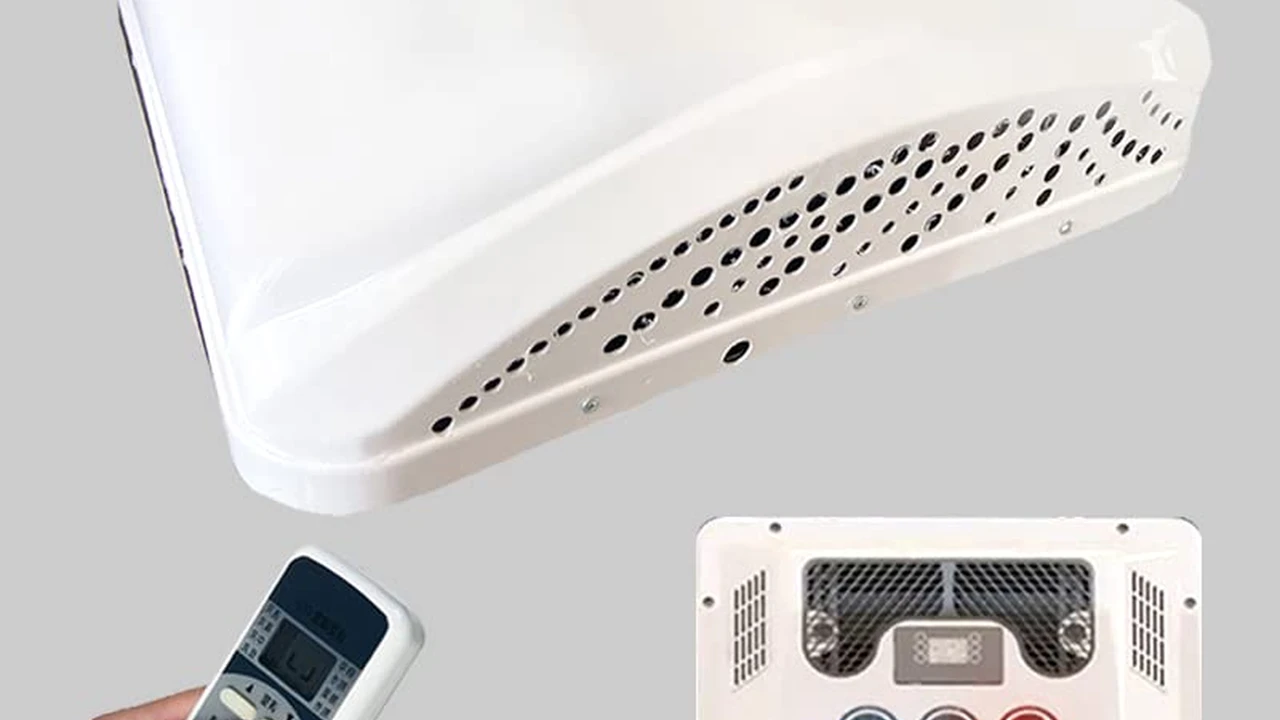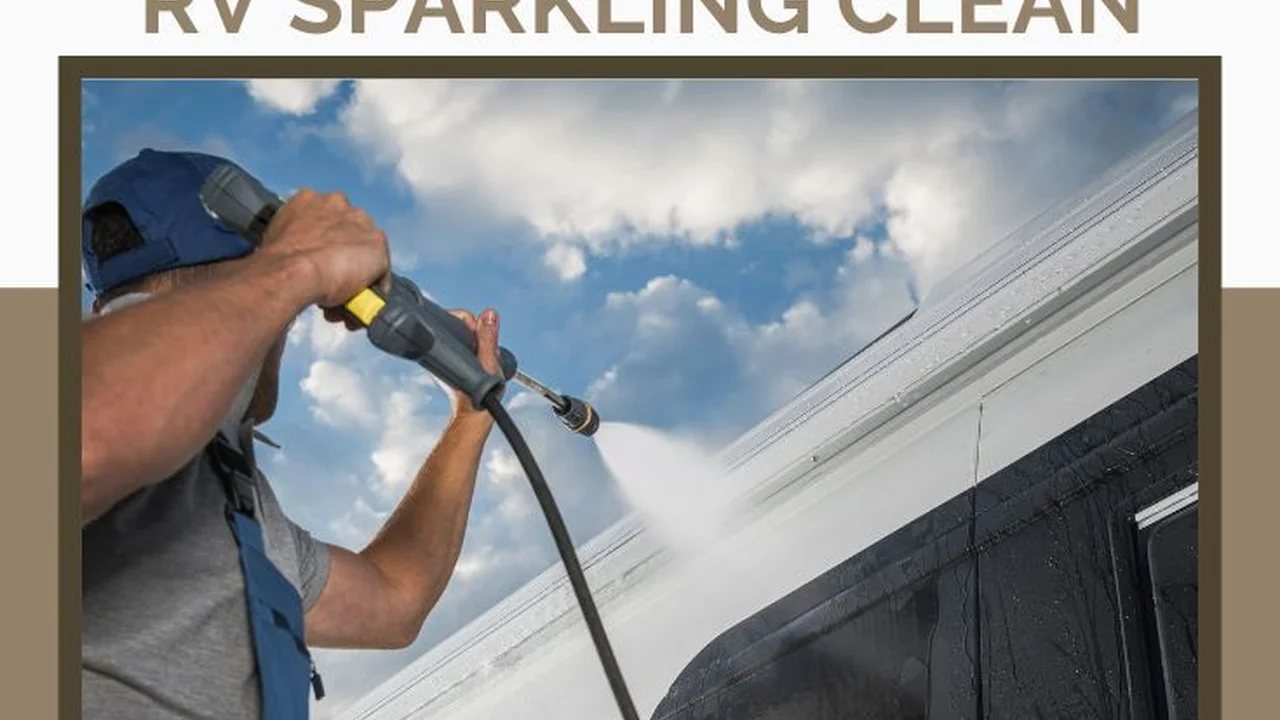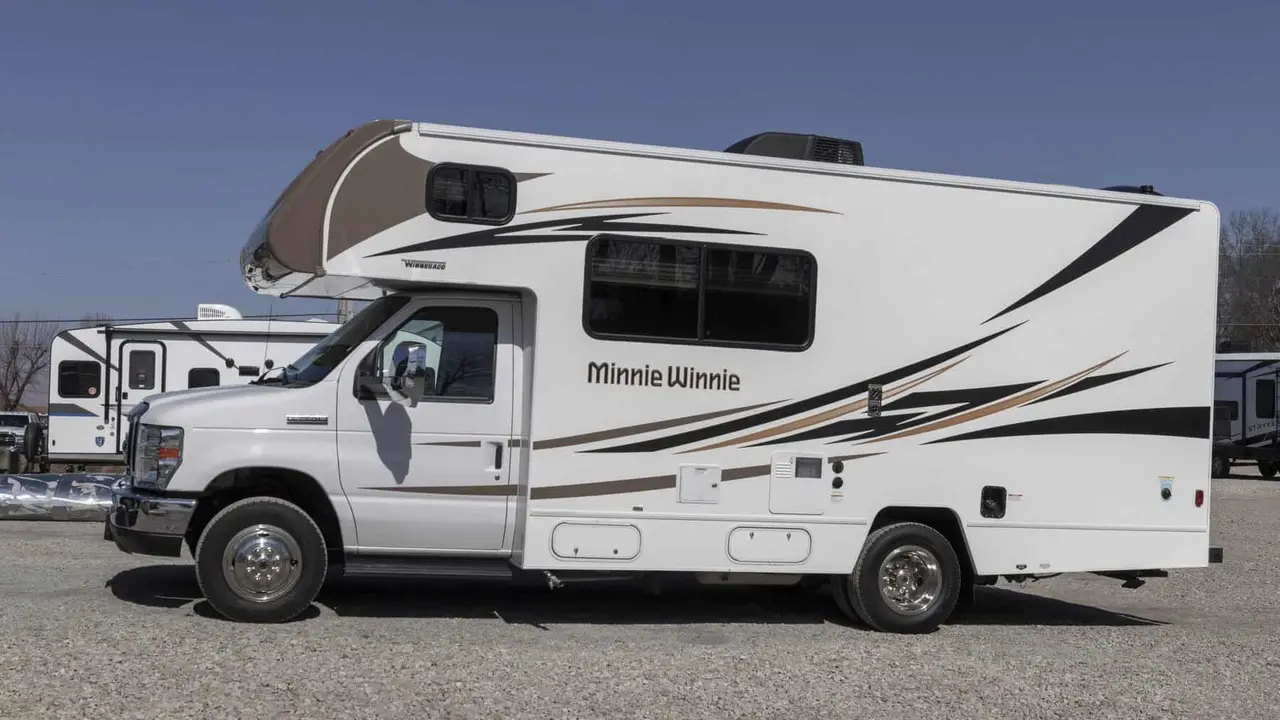RV Full-Time Living: Making the Transition

Embarking on the full-time RV lifestyle is an exciting adventure, but it also presents unique challenges when it comes to space and organization. This comprehensive guide provides practical strategies, product recommendations, and detailed information to help you maximize your living space and stay organized on the road.
Understanding the Unique Challenges of RV Living Space
Living in an RV full-time is vastly different from living in a traditional home. Space is limited, and every square inch counts. Understanding these challenges is the first step in creating a comfortable and functional living environment.
Limited Square Footage: RVs, even the largest ones, offer significantly less living space than a typical house or apartment. This necessitates careful planning and creative storage solutions.
Multi-Purpose Spaces: Often, one area in an RV serves multiple purposes. For example, the dinette might also function as a workspace or extra sleeping area. This requires flexibility and adaptability in your organizational strategies.
Constant Movement: The fact that your home is constantly moving presents its own set of challenges. Items need to be secured to prevent them from shifting or falling during travel. Choosing the right storage containers and securing mechanisms is crucial.
Weight Considerations: RVs have weight limits, and exceeding these limits can compromise safety and fuel efficiency. This means you need to be mindful of what you bring with you and prioritize lightweight options whenever possible.
Climate Control: Managing temperature and humidity in a small space can be tricky. Efficient climate control systems and strategies for ventilation are essential for comfort and preventing moisture buildup.
RV Organization Essentials Maximizing Every Inch
Effective RV organization is about making the most of the available space and keeping things tidy and accessible. Here are some essential organizational tools and strategies:
Vertical Storage Solutions: Utilize wall space with shelves, hanging organizers, and over-the-door storage. These solutions maximize vertical space and keep items off countertops and floors.
Collapsible and Foldable Items: Choose items that can be folded or collapsed when not in use, such as laundry baskets, storage bins, and even furniture. This saves valuable space and makes storage easier.
Multi-Functional Furniture: Invest in furniture that serves multiple purposes, such as a sofa bed, a dinette with built-in storage, or an ottoman with a lift-up lid.
Clear Storage Containers: Use clear storage containers to easily see what's inside without having to open them. Labeling containers is also helpful for quick identification.
Command Hooks and Strips: These adhesive hooks and strips are perfect for hanging lightweight items without damaging walls. They are versatile and easy to remove.
Under-Bed Storage: Maximize the space under your bed with storage containers or drawers. This is a great place to store bulky items like bedding, clothing, or camping gear.
Cabinet Organizers: Utilize cabinet organizers to keep your kitchen and bathroom cabinets tidy and efficient. Options include shelf dividers, pull-out drawers, and spice racks.
RV Kitchen Organization Creating a Functional Culinary Space
The RV kitchen is often one of the most challenging areas to organize due to its small size and the abundance of items needed for cooking and meal preparation. Here are some tips for creating a functional and efficient RV kitchen:
Declutter Regularly: Get rid of any kitchen items you don't use regularly. Be ruthless in your decluttering efforts to free up valuable space.
Stackable Cookware: Invest in stackable cookware sets that take up less space than traditional cookware. Look for sets with removable handles for even greater space savings.
Hanging Utensil Racks: Install a hanging utensil rack to keep your cooking utensils within easy reach without cluttering your countertops.
Spice Racks: Organize your spices with a spice rack. Wall-mounted or cabinet-door racks are great options for saving space.
Foldable Cutting Boards: Use foldable cutting boards that can be easily stored when not in use.
Dish Drying Racks: Choose a compact dish drying rack that doesn't take up too much counter space. Consider a foldable rack for easy storage.
Refrigerator Organization: Use clear bins to organize your refrigerator and keep food items from getting lost or spoiled. Labeling bins is also helpful.
Product Recommendation: Stackable Cookware Set
Product: Calphalon Premier Space Saving Nonstick Cookware Set
Use Case: This cookware set is designed to nest and stack securely, saving up to 30% more space than non-stacking Calphalon cookware. It’s ideal for RV kitchens with limited storage.
Product Comparison: Compared to other stackable cookware sets, the Calphalon Premier offers superior nonstick performance and durability. It's also oven-safe up to 450 degrees Fahrenheit.
Detailed Information:
- Material: Hard-anodized aluminum with nonstick coating
- Pieces: Varies (typically includes pots, pans, and lids)
- Features: Nesting design, durable nonstick surface, oven-safe
- Pricing: $200 - $400 (depending on the number of pieces)
RV Closet Organization Maximizing Wardrobe Space
Closet space in an RV is often limited, making it essential to maximize every inch. Here are some tips for organizing your RV closet:
Declutter Your Wardrobe: Start by decluttering your wardrobe and getting rid of any clothes you don't wear regularly. Be realistic about what you need and what you can live without.
Hanging Organizers: Use hanging organizers to create extra storage space for shoes, sweaters, and other items.
Slimline Hangers: Replace bulky hangers with slimline hangers to save space. Velvet hangers are a good option because they prevent clothes from slipping.
Rolling Clothes Racks: Consider using a rolling clothes rack to create extra hanging space. These racks can be easily moved around as needed.
Vacuum Storage Bags: Use vacuum storage bags to compress bulky items like blankets and winter clothing. This can save a significant amount of space.
Shoe Organizers: Use shoe organizers to keep your shoes tidy and off the floor. Over-the-door organizers are a great option for saving space.
Fold Clothes Neatly: Learn to fold clothes neatly to maximize space in drawers and shelves. The KonMari method is a popular folding technique that can help you save space and stay organized.
Product Recommendation: Vacuum Storage Bags
Product: Space Saver Premium Vacuum Storage Bags
Use Case: These bags are perfect for compressing bulky items like bedding, clothing, and towels, saving up to 80% of storage space. Ideal for RVers who need to maximize limited closet space.
Product Comparison: Compared to other vacuum storage bags, Space Saver Premium bags are made with thicker, more durable plastic, making them less likely to tear or leak. They also come with a hand pump for easy vacuuming.
Detailed Information:
- Material: Thick, durable plastic
- Sizes: Available in various sizes (small, medium, large, jumbo)
- Features: Double-zip seal, triple-seal turbo valve, hand pump included
- Pricing: $20 - $40 (depending on the number and size of bags)
RV Bathroom Organization Small Space Solutions
The RV bathroom is often the smallest room in the RV, making organization a top priority. Here are some tips for maximizing space and staying organized in your RV bathroom:
Over-the-Toilet Storage: Utilize the space above the toilet with a storage unit. These units typically have shelves or cabinets for storing toiletries, towels, and other bathroom essentials.
Shower Caddy: Use a shower caddy to keep your shampoo, conditioner, and other shower essentials organized and within easy reach.
Hanging Toiletry Organizer: A hanging toiletry organizer is perfect for storing toiletries and makeup. Look for one with multiple compartments and pockets to keep everything organized.
Magnetic Strips: Install magnetic strips on the inside of your medicine cabinet door to store small metal items like tweezers, nail clippers, and bobby pins.
Towel Bars and Hooks: Install towel bars and hooks to hang towels and washcloths. Over-the-door hooks are a great option for saving space.
Clear Storage Containers: Use clear storage containers to organize your bathroom drawers and cabinets. Labeling containers is also helpful.
Declutter Regularly: Get rid of any bathroom items you don't use regularly. Expired medications and old makeup should be discarded.
Product Recommendation: Over-the-Toilet Storage Unit
Product: Zenna Home Over-the-Toilet Spacesaver
Use Case: This storage unit fits over most standard toilets and provides extra storage space for toiletries, towels, and other bathroom essentials. It’s a great way to maximize vertical space in a small RV bathroom.
Product Comparison: Compared to other over-the-toilet storage units, the Zenna Home Spacesaver is made with durable materials and features a stylish design. It also has adjustable shelves for customized storage.
Detailed Information:
- Material: Engineered wood
- Dimensions: Varies (typically around 23" x 9" x 68")
- Features: Adjustable shelves, open and concealed storage
- Pricing: $50 - $80
RV Living Area Organization Creating a Comfortable and Functional Space
The RV living area is where you'll spend most of your time, so it's important to create a comfortable and functional space. Here are some tips for organizing your RV living area:
Multi-Functional Furniture: Choose furniture that serves multiple purposes, such as a sofa bed, a dinette with built-in storage, or an ottoman with a lift-up lid.
Coffee Table with Storage: A coffee table with storage is a great place to store books, magazines, and other living room essentials.
Wall-Mounted Shelves: Install wall-mounted shelves to display decorative items and store books or other items.
Baskets and Bins: Use baskets and bins to organize clutter and keep things tidy. Baskets can be used to store blankets, pillows, or toys.
Cord Management: Keep cords organized with cord organizers or cable ties. This will prevent tangles and keep your living area looking neat.
Declutter Regularly: Get rid of any items you don't use regularly. Donate or sell unwanted items to free up space.
Product Recommendation: Ottoman with Lift-Up Lid
Product: Seville Classics Foldable Storage Ottoman Bench
Use Case: This ottoman provides comfortable seating and hidden storage space. It’s perfect for storing blankets, pillows, toys, or other living room essentials. When not in use, it can be folded flat for easy storage.
Product Comparison: Compared to other storage ottomans, the Seville Classics ottoman is made with durable materials and features a stylish design. It also has a sturdy construction and can support up to 250 pounds.
Detailed Information:
- Material: Faux leather, MDF
- Dimensions: Varies (typically around 31" x 15.75" x 15.75")
- Features: Foldable design, sturdy construction, hidden storage
- Pricing: $40 - $60
RV Outdoor Organization Keeping Your Campsite Tidy
Organizing your outdoor space is just as important as organizing your indoor space. Here are some tips for keeping your campsite tidy:
Outdoor Storage Bins: Use outdoor storage bins to store camping gear, tools, and other outdoor essentials. Choose waterproof bins to protect your belongings from the elements.
Portable Camping Table: A portable camping table provides a surface for cooking, eating, and other outdoor activities. Choose a table that is lightweight and easy to set up.
Camping Chairs: Invest in comfortable camping chairs for relaxing around the campsite. Choose chairs that are lightweight and easy to fold up for storage.
Grill and Cooking Supplies: Organize your grill and cooking supplies in a designated area. Use a grill caddy to keep your grilling tools organized.
Trash Can: Keep your campsite clean by using a trash can. Choose a trash can with a lid to prevent animals from getting into your trash.
Outdoor Rug: An outdoor rug can help to define your campsite and keep dirt and mud out of your RV.
Product Recommendation: Waterproof Outdoor Storage Bin
Product: Rubbermaid ActionPacker Storage Box
Use Case: This storage box is waterproof and durable, making it perfect for storing camping gear, tools, and other outdoor essentials. It’s designed to withstand the elements and keep your belongings safe and dry.
Product Comparison: Compared to other outdoor storage bins, the Rubbermaid ActionPacker is made with high-quality materials and features a secure latching lid. It’s also stackable for easy storage.
Detailed Information:
- Material: High-density polyethylene
- Sizes: Available in various sizes (8, 24, 35 gallons)
- Features: Waterproof, durable, stackable, latching lid
- Pricing: $20 - $50 (depending on the size)
Maintaining Organization on the Road Establishing Routines and Habits
Staying organized on the road requires establishing routines and habits. Here are some tips for maintaining organization while traveling:
Daily Tidy-Up: Spend a few minutes each day tidying up your RV. This will prevent clutter from accumulating and make it easier to stay organized.
Put Things Away Immediately: Get in the habit of putting things away immediately after you use them. This will prevent clutter from building up.
Declutter Regularly: Regularly declutter your RV to get rid of any items you no longer need. This will free up space and make it easier to stay organized.
Inventory Management: Keep track of your supplies and inventory so you know what you have and what you need to buy. This will prevent you from overstocking or running out of essential items.
Designated Storage Spots: Assign designated storage spots for all of your belongings. This will make it easier to find things and keep your RV organized.
Travel Day Checklist: Create a travel day checklist to ensure that everything is secured and ready for travel before you hit the road.
RV Weight Management Ensuring Safe Travels
Weight management is crucial for safe RV travel. Overloading your RV can compromise its handling and braking ability. Here's what you need to know:
Gross Vehicle Weight Rating (GVWR): Know your RV's GVWR, which is the maximum permissible weight of the fully loaded RV.
Unloaded Vehicle Weight (UVW): Understand the UVW, which is the weight of the RV as it leaves the factory without any cargo, fluids, or passengers.
Cargo Carrying Capacity (CCC): Calculate your CCC by subtracting the UVW from the GVWR. This is the maximum weight of cargo, passengers, and fluids you can carry.
Weigh Your RV: Weigh your RV at a certified scale to determine its actual weight. This will help you identify any potential weight issues.
Distribute Weight Evenly: Distribute weight evenly throughout your RV to maintain balance and stability.
Avoid Overloading: Avoid overloading your RV by carefully monitoring the weight of your belongings and fluids.
RV Climate Control Staying Comfortable in All Seasons
Maintaining a comfortable climate inside your RV is essential for full-time living. Here are some tips for managing temperature and humidity:
Insulation: Ensure your RV is well-insulated to keep it warm in the winter and cool in the summer.
Ventilation: Use vents and fans to circulate air and prevent moisture buildup.
Air Conditioning: Use air conditioning to cool your RV in hot weather.
Heating: Use a furnace or space heater to heat your RV in cold weather.
Dehumidifier: Use a dehumidifier to reduce humidity levels and prevent mold growth.
Window Coverings: Use window coverings to block out sunlight and reduce heat gain.
Product Recommendation: Portable Dehumidifier
Product: hOmeLabs Small Space Dehumidifier
Use Case: This dehumidifier is designed for small spaces and can remove up to 9 ounces of moisture per day. It’s perfect for RVs to prevent mold and mildew growth.
Product Comparison: Compared to other small dehumidifiers, the hOmeLabs model is quiet and energy-efficient. It also has an auto shut-off feature when the water tank is full.
Detailed Information:
- Capacity: 9 ounces per day
- Coverage Area: Up to 150 square feet
- Features: Quiet operation, auto shut-off, compact design
- Pricing: $30 - $50
Adapting to Full-Time RV Living Mindset and Lifestyle Adjustments
Adapting to full-time RV living requires a shift in mindset and lifestyle. Here are some tips for making a smooth transition:
Downsize Your Belongings: Be prepared to downsize your belongings significantly. Only bring what you truly need and use regularly.
Embrace Minimalism: Embrace a minimalist lifestyle and focus on experiences rather than material possessions.
Be Flexible: Be flexible and adaptable to changing circumstances. RV living can be unpredictable, so it's important to be able to roll with the punches.
Plan Ahead: Plan your routes and campsites in advance, but be prepared to change your plans if necessary.
Stay Connected: Stay connected with friends and family through phone calls, video chats, and social media.
Join RV Communities: Join RV communities and online forums to connect with other RVers and share experiences and tips.
Financial Considerations Budgeting for Full-Time RV Living
Budgeting is essential for full-time RV living. Here are some financial considerations to keep in mind:
RV Expenses: Factor in the cost of RV payments, insurance, maintenance, and repairs.
Campsite Fees: Budget for campsite fees, which can vary depending on the location and amenities.
Fuel Costs: Calculate your fuel costs based on your planned routes and mileage.
Food and Entertainment: Budget for food, entertainment, and other expenses.
Emergency Fund: Set aside an emergency fund to cover unexpected expenses.
Income: Plan for how you will generate income while living on the road. Options include remote work, freelancing, and seasonal jobs.
Staying Safe on the Road Security Measures and Emergency Preparedness
Safety is paramount when living on the road. Here are some security measures and emergency preparedness tips:
Security System: Install a security system in your RV to deter burglars.
Carbon Monoxide Detector: Install a carbon monoxide detector to protect against carbon monoxide poisoning.
Smoke Detector: Install a smoke detector to provide early warning of a fire.
First Aid Kit: Keep a well-stocked first aid kit in your RV.
Emergency Supplies: Pack emergency supplies such as food, water, blankets, and a flashlight.
Know Your Location: Always be aware of your location and have a plan for emergencies.
RV Full-Time Living Resources and Communities Connecting with Fellow RVers
Connecting with other RVers can provide valuable support and information. Here are some resources and communities to explore:
RV Forums: Join RV forums to ask questions, share experiences, and connect with other RVers.
RV Clubs: Join RV clubs to participate in rallies, events, and group trips.
RV Blogs and Websites: Follow RV blogs and websites for tips, advice, and inspiration.
Social Media Groups: Join social media groups for RVers to connect with others and share photos and stories.
RV Rallies and Events: Attend RV rallies and events to meet other RVers and learn about new products and services.
By implementing these organizational strategies, choosing the right products, and establishing routines, you can create a comfortable, functional, and enjoyable RV living experience. Remember that adapting to this lifestyle takes time and effort, but the rewards of freedom and adventure are well worth it.:max_bytes(150000):strip_icc()/277019-baked-pork-chops-with-cream-of-mushroom-soup-DDMFS-beauty-4x3-BG-7505-5762b731cf30447d9cbbbbbf387beafa.jpg)






